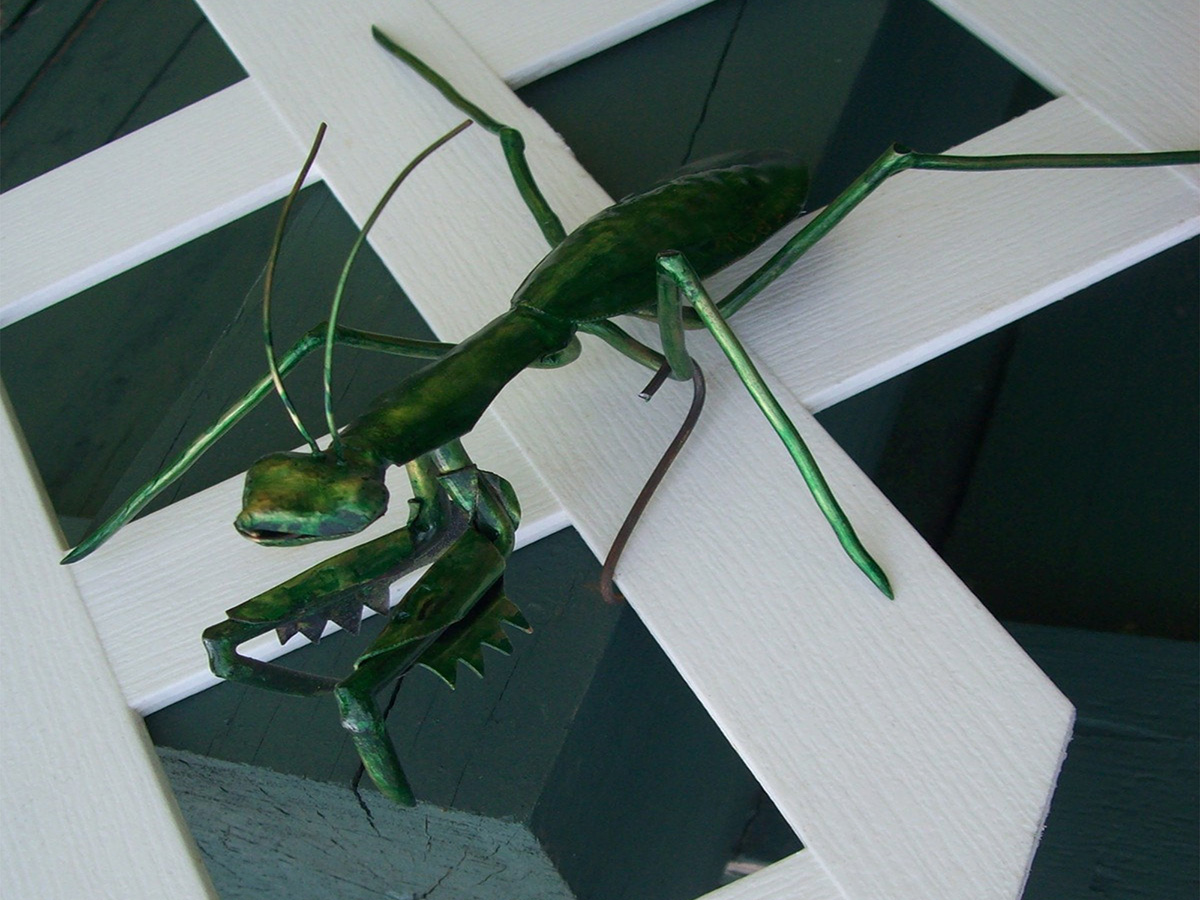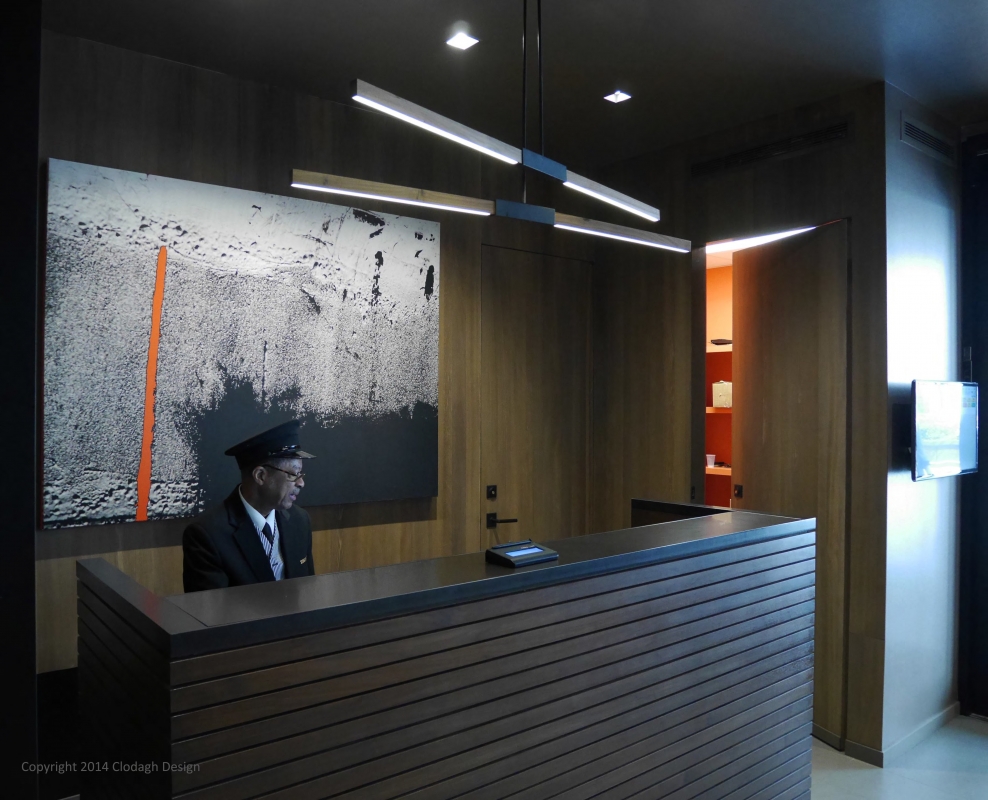If you’ve been in a high end furniture store in the last few years you will have noticed a proliferation of faux antique finishes. Whether it’s layers of paint artfully worn through to show different colors or wood, crazing, chipping, old or the appearance of old is very big right now. Of course, there is a difference between a fashionable faux finish and just plain beat up. What we want to achieve here is to take a low value, unattractive item, and turn it into something unique and beautiful.
We are going to start with this chair. In terms of low value you can’t get much lower, I found it behind a dumpster. The chair itself if actually a good solid, if somewhat plain, piece made of oak and finished in polyurethane. There is a bit of buildup of gunk on the arm rests, and some places on the seat where water has lifted the finish. All in all a perfectly acceptable chair for a dorm room or a seedier dive bar.
The first step in bringing this chair to life is smoothing it out a bit. For the finish I’m applying we don’t need to go to bare wood, we just want to level out some blemishes and remove the gunky buildup. For this I used 220 grit paper. Again the main thing you are looking for here is texture. Certain imperfections, like divots and chips in the wood itself, are actually in keeping with the look we are aiming for. Others, like the water spots, are not. But it’s largely a matter of personal taste.
After sanding, take your time and fully rem![]() ove all the dust. I started with a dry rag, and then used a tack cloth to get any that remains. Be sure to go over the whole piece, leave no dust behind.
ove all the dust. I started with a dry rag, and then used a tack cloth to get any that remains. Be sure to go over the whole piece, leave no dust behind.
The first layer of this antique finish is done with Permalac EF Copper. I sprayed, so I took 8 oz of EF copper and cut it with 2 oz #281 thinner. I’ve found that the best results come from doing light coats, and reapplying wet on wet, until the coating flows together. This will give you the best coverage and finish without runs. For this project, I used this technique to spray until I had full coverage with the EF copper. This used about 8 oz. of the material I had mixed up.
It was the end of the day, so I let the chair dry over night. The next morning I applied Permalac EF Black. I again mixed 8 oz of the EF black with 2 oz of the #281 thinner. I used the same spraying method as with the copper. After I finished, the chair appeared completely black.
I let the layer of black rest for 2 hours. Now it was ready for the antiquing process. Using very fine sandpaper, in this case 800 grit, I lightly wet sanded the whole chair. On any corners, or any area where natural wear would occur, I sanded heavier, fully penetrating the coat of black, and sometimes the coat of copper. I found that it was useful to continually clean the areas I was working with a rag. This removed the wet black dust which obscured the surface. Once I was happy with the results, I dried the chair with a rag, and removed any leftover dust.
The final step in this project is applying to coats of Permalac EF clear satin. I did this using the same mix ratio and methods as before, allowing 1 hour between coats. As the clear is applied and begins to set up you will see some of the copper come to the surface. And that’s it, I let the chair set for 24 hours and brought it home.












Leave A Comment